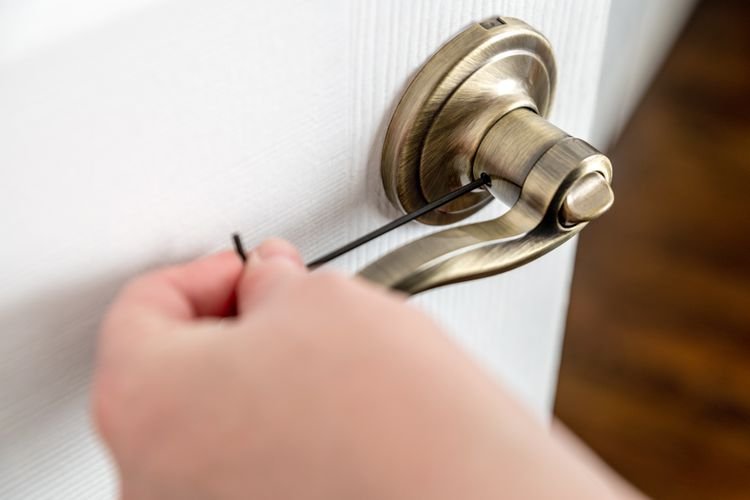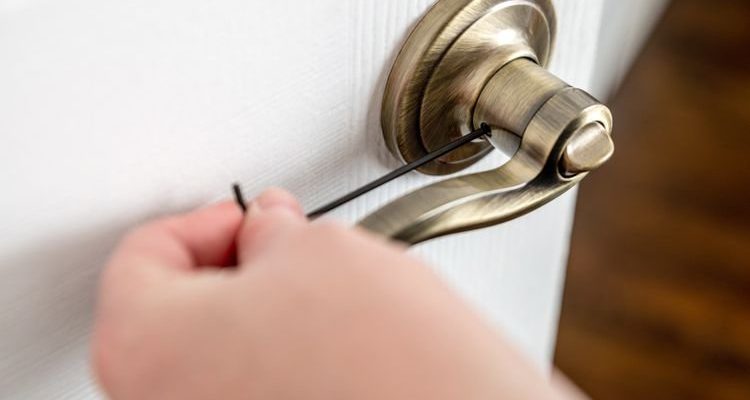
You might not think much about how a tiny screw can impact the functionality of your door latch, but I promise it matters! Whether you have a standard door latch or something fancier, tightening the faceplate is a simple fix that’ll make your door feel brand new again. So, let’s dive into how to tighten a faceplate on an interior door latch without breaking a sweat!
Understanding the Components of Your Door Latch
Before we grab any tools, let’s get familiar with the parts of the latch. The interior door latch typically consists of several key components:
- Faceplate: This is the shiny metal piece you see on the edge of your door. It covers the latch mechanism and keeps it secure.
- Latch Bolt: This is the part that extends when you close the door. It locks into place against the strike plate.
- Strike Plate: This is the metal plate mounted on the door frame that the latch bolt goes into.
- Screws: These are the little guys that hold everything in place.
Each part plays a role, but the focus here is on that faceplate. If it’s loose, you might notice your door not latching correctly, or it might rattle when closed.
Gathering Your Tools for the Job
Now that we’ve got a clear picture of what we’re working with, let’s gather our tools. Honestly, you won’t need much:
- Screwdriver: Make sure to use the right size; usually, a flathead or Phillips will do.
- Cleaning cloth: A cloth can come in handy to wipe down the area.
- Optional Pliers: In case a screw is particularly stubborn.
You might be wondering why I suggest a cleaning cloth. Dust and grime can settle behind the faceplate over time, and cleaning it up will ensure a snug fit once you tighten it. Plus, it’s always nice to have a tidy workspace!
Steps to Tighten the Faceplate
Now, let’s break down the steps to tighten that faceplate. It sounds simple—and it is! Here’s how to do it:
1. Inspect the Faceplate
Start by checking the faceplate for any visible damage. Look for cracks or bends that might prevent it from sitting properly. If the faceplate looks good, you’re ready to move on to the next step.
2. Locate the Screws
Next, take a close look at the screws on the faceplate. You might see one or two screws holding it in place. If there are any that look loose or even missing, make a note of that. Mark it down, and don’t worry—we’ll address it!
3. Tighten the Screws
Grab your screwdriver and gently tighten each screw. Don’t force them; just snug them up until they feel secure. If a screw won’t budge, you might need to use your pliers for a bit of extra grip.
This is the moment where you might feel like a door whisperer, coaxing your latch back into a happy place!
4. Test the Latch
After tightening, give the latch a test run. Close the door gently and see if it latches properly. If it still feels loose, double-check those screws. Sometimes, just a tiny adjustment can make all the difference.
Common Problems and Their Solutions
Even the simplest tasks can come with their own challenges. Here are some common issues you might run into while tightening the faceplate, along with solutions:
- Stripped Screws: If a screw doesn’t tighten, it might be stripped. You can replace it with a slightly larger screw or a screw anchor to give it a better grip.
- Misaligned Latch: If the latch won’t align properly after tightening, you might need to adjust the strike plate. Loosen the screws and reposition it before tightening again.
- Worn Parts: If the faceplate or latch seems worn out, consider replacing them altogether. Hardware stores offer plenty of affordable options.
Why Tightening the Faceplate Matters
So, why does it matter? A well-tightened faceplate ensures that your door operates smoothly. It helps keep your home secure, prevents drafts, and stops unwanted noise. Plus, it cuts down on wear and tear on the latch itself.
Think about it: every time you open and close your door, a loose faceplate can lead to bigger issues down the line. By taking a few minutes to tighten it, you’re not just fixing a minor annoyance; you’re contributing to the longevity of your door.
When to Call a Professional
While tightening the faceplate is often a DIY job, there are times when it’s best to call a professional. If you find that the latch still isn’t working after tightening, or if the door frame itself seems damaged, it might be time for expert help.
You might also want to bring in a pro if you feel uncomfortable with the tools or the task. There’s no shame in asking for assistance when it’s needed!
Tightening a faceplate on an interior door latch is a small fix that can make a big difference. With just a few simple tools and a little time, you can ensure your door operates smoothly, keeping your home secure and quiet.
The next time you notice a sticky door, remember these steps. A little attention now can save you from larger problems later. So grab your screwdriver, take a deep breath, and tackle this task with confidence. Your door will thank you!
